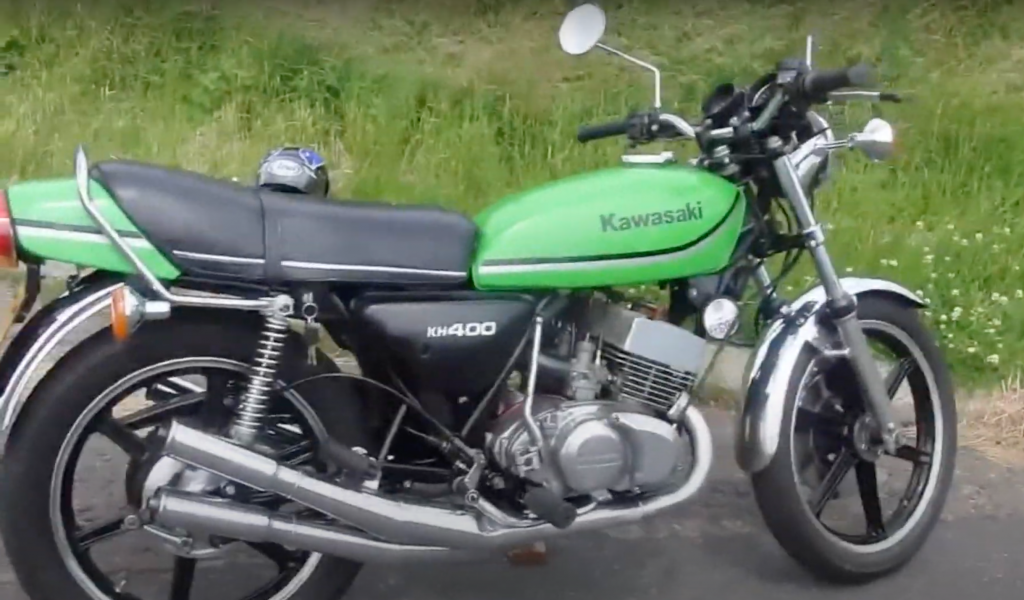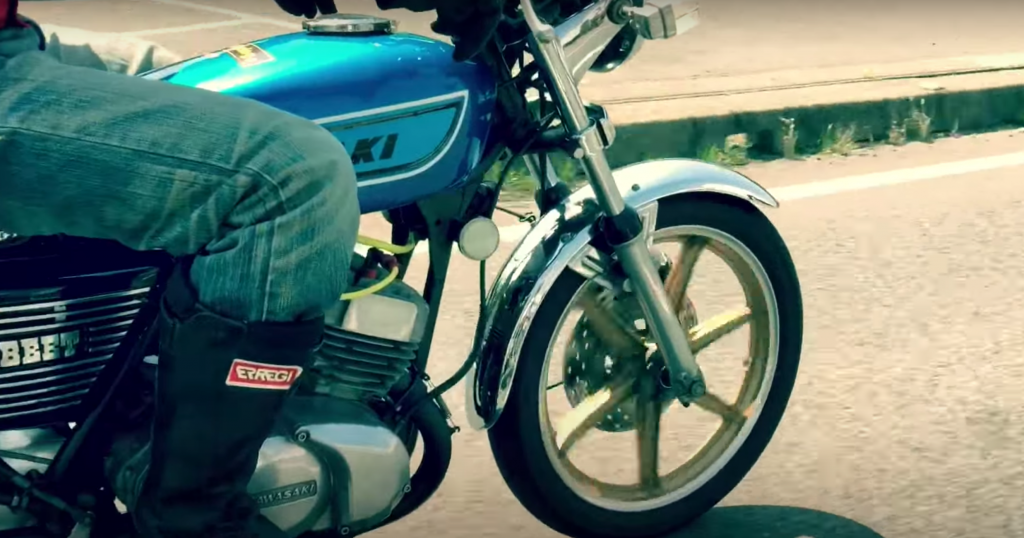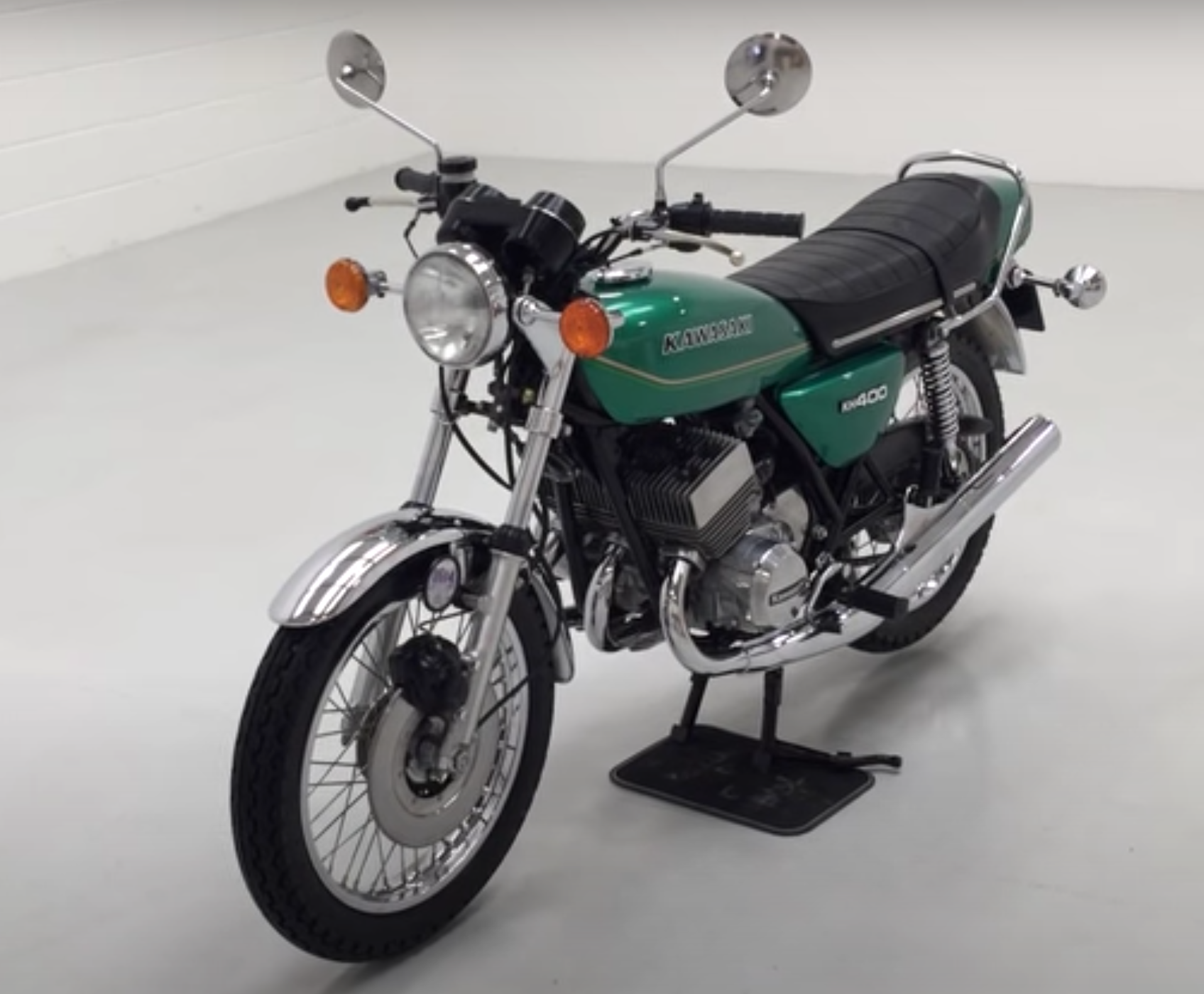KAWASAKI KH400
The Kawasaki Triples are known for their unusual characteristics, some of them more useful or flattering than others. For example, not many people will be willing to drive a motorcycle with such suspicious handling; yet, their riders from back at the time seemed to be in it more for the adrenaline than for anything else. Visit our Sponsor: Indianapolis Parking Lot Striping
The bikes exceeding speed was perfect in all sense of the word. Still, they went through a lot of changes in many efforts to please everyone and Kawasaki distinguished itself as one of the few manufacturers that recognized its creations’ flaws.

Many of the modifications the Triples endured were either to minimize noise, increase power, give a more refined performance, or making them more ecologically friendly – or at least less harming for the environment. Some of the models were well received by the customers, some of them not so much as the manufacturers had to sacrifice certain features in favor of others, but a few of the samples that remain memorable to this day are the ones belonging fusion of the H and S series.
The triples went out of the market for a short time before their complete withdrawal, but were relaunched in 1976 as the KH (Kawasaki Highway) range, including almost undistinguishable 250 and 400 models together with a 500 using a greatly detuned and re-geared style of the H1 device.
The KH400 was a bigger, modernized and to some extent less exciting adaptation of the S3 400. The air box was reshaped, the silencers were made more obstructive, the carbs re-jetted, and the machine was made to run on unleaded gasoline for the first time, making 38bhp. The modifications cut 4bhp from the power production of the S3 and the device was fixed with CDI ignition which used to be for the smaller bikes.
The gearbox sprocket wheel was finished one tooth larger, which lessened speed, but it as thanks to it that the KH could compete with the RD400, so Kawasaki came to the conclusion that the optimum way to put both in appropriate race was to generate a more sophisticated ride. Additional extensions were put on the edging and there was a firming of the shock-absorber mountings. Smoother shocks were fixed, but the road tests of the time stated that the 400 did not handle as well as its forerunner, commenting that it floundered a bit on snaking highways. The trustworthiness of the premature CDI pieces was dubious as well.
To boot it all, the KH 400 hardly was any speedier than the KH 250 and had no more than the CDI ignition to validate its costlier price. Almost no one was willing to purchase a KH 400 when they had approved their road test and some dealer discounters would sell them a new KH 400 for less than a KH 250.

Eventually, this bubble burst when beginners were limited to 125cc bikes, and a dealer would give you a KH 250 if you acquired a Z1300 six.
In 1977 Kawasaki upgraded the KH 400 to A4 spec in an advancement that comprised a pleasanter paint job, and the exclusion of the metal strip from the seat.
The bike was offered in Candy Emerald Green or Candy Royal Purple with pin striping.
1976 KH400-A3
This was the less exciting adaptation of the S3.
Each and every one of the modifications Kawasaki made on all other 1976 models were evident on the KH400. The A3 models were essentially a big KH 250, the greatest variance over the early S3 model was the employing of electronic ignition and a larger, more restraining air box array combined with softer exhausts. The CDI was a longed-for supplement but the novel air box and exhausts stole 4 bhp to the KH turning it even slower. Two color options were presented: Green or Orange. Both of them were not very well-received by the public, but the Orange sample turned out to be the most popular one.
1977 KH400-A4
The only change made for 1977 were the two new colors: Candy Emerald Green or Candy Royal Purple. Unlike the 1976’s model, both colors were pleasant and the customers took them in with open arms. The pin striping was akin to the KH250-B2 too.
There were no more samples brought into the UK after the A4, even though merchants were still selling this same model in 1980. Kawasaki even attempted a “One-Race Series” in the UK to increase auctions in the late 70’s, however the Triples were way past their “sell by date” time and the institution of new four stroke models like the Z500 took them out of the spotlight.
There were more prototypes out in 1978 and 1979 built from the popular KH 250 models but these only got to a few countries.
Thank you for visiting our site. We hope you are finding a ton of great information. If you have any comments or questions, please contact us today. Also, if you have any tips to share, please submit your tips to us. If we end up using your tip on our blog, we will give you full credit. One last thing we ask is that you visit our sponsor – Parking Lot Striping Indianapolis

